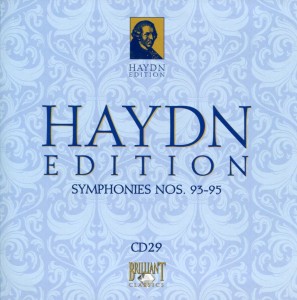 This is the time of year that I dread: late October. It’s when my wife takes down all of the flowers that have graced our balcony since late May, early June.
This is the time of year that I dread: late October. It’s when my wife takes down all of the flowers that have graced our balcony since late May, early June.
There’s a quote from Sherlock Holmes, from the story titled “The Naval Treaty,” in which he waxes poetic about flowers.
“What a lovely thing a rose is!”
“There is nothing in which deduction is so necessary as religion,” said he, leaning with his back against the shutters. “It can be built up as an exact science by the reasoner. Our highest assurance of the goodness of Providence seems to me to rest in the flowers. All other things, our powers, our desires, our food, are all really necessary for our existence in the first instance. But this rose is an extra. Its smell and its color are an embellishment of life, not a condition of it. It is only goodness which gives extras, and so I say again that we have much to hope from the flowers.”
Even Sherlock Holmes, as cold and detached as he appears to be in print and film, was swayed, albeit momentarily, by the beauty of flowers.
How could I be any less moved by them?
 What makes this time of year interesting is that change is no longer a theory. It’s a fact, a palpable one at that. Trees turn color, temperatures drop, the wind kicks up. It’s a great time of year to be inside. Yet, not even there can one escape the chill that seeps inside. Winter is coming.
What makes this time of year interesting is that change is no longer a theory. It’s a fact, a palpable one at that. Trees turn color, temperatures drop, the wind kicks up. It’s a great time of year to be inside. Yet, not even there can one escape the chill that seeps inside. Winter is coming.
So, listening to Haydn’s music seems the perfect way to pass this season. Haydn will take me nearly up to Spring, 2014. The films of Woody Allen will carry me over the finish line into my second favorite season (after Fall).
For now, I get to enjoy Haydn, starting with Symphony No. 93.
Symphony No. 93 in D is the first of 12 symphonies dubbed The London Symphonies. It was composed in 1791 and first performed on February 17, 1792. Haydn was 59, about a month and a half shy of his 60th birthday.
According to its entry on Wikipedia,
Towards the end of the second movement, the music gradually becomes slower and softer until an unexpected fortissimo bassoon “fart” brings brings the music back for the movement’s closing. This shows Haydn’s sense of humor — similar to the 2nd movement of the Surprise Symphony. Antony Hodgson identifies George Szell as a conductor who was not afraid to overdo “the vulgarity of this joke” in the slow movement.
Ah, so Haydn had a bawdy sense of humor like Mozart did. I wonder if such crudities were common to that region of the world at that time? Or if “fart” jokes are funny the world ’round, in all eras?
Symphony No. 94 in G “Surprise” was composed in 1791 and performed for the first time on March 23, 1792 — eight days shy of Haydn’s 60th birthday. According to Wiki,
Haydn’s music contains many jokes, and the Surprise Symphony includes probably the most famous of all: a sudden fortissimo chord at the end of an otherwise piano opening theme in the variation-form second movement. The music then returns to its original quiet dynamic, as if nothing had happened, and the ensuing variations do not repeat the joke. (In German it is commonly referred to as the Symphony “mit dem Paukenschlag“—”with the kettledrum stroke”).
In Haydn’s old age, George August Griesinger, his biographer, asked whether he wrote this “surprise” to awaken the audience. Haydn replied:
“No, but I was interested in surprising the public with something new, and in making a brilliant debut, so that my student Plevel, who who was at that time engaged by an orchestra in London (in 1792) and whose concerts had opened a week before mine, should not outdo me. The first Allegro of my symphony had already met with countless Bravos, but the enthusiasm reached its highest peak at the Andante with the Drum Stroke. Encore! Encore! sounded in every throat, and Pleyel himself complimented me on my idea.”
It’s good to know that Haydn had a sense of humor. One’s view of Classical musicians is that they are dry as, well, popcorn farts.
The fortissimo “surprise” in Movement II (“Andante”) appears around the : 33 mark. If one isn’t expecting it, it could be incredibly jarring. Listen for yourself:
I can dig it.
Symphony No. 95 in C Minor was also composed in 1791.
I think the “favorite Haydn symphony” award goes to No. 94. The surprise is quite cool. Granted, the “fart” joke in No. 93 is clever, too. But I’ve never been one for Dumb and Dumber-level humor.

I think you’re right that given the lofty place classical music holds in the hierarchy of genres, plus the fact that all we know of these composers are stuffy oil paintings of them in white wigs, there’s a tendency to think of them as a bunch of somber stuffed shirts. That they were into fart jokes and bawdy humor shouldn’t be surprising, because they were human, after all. But somehow it is jarring to think of these guys like that.